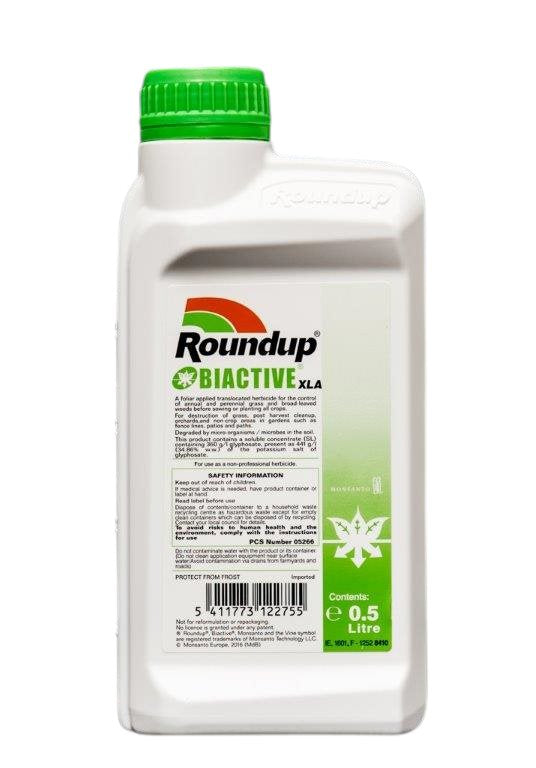Description
- PERENNIAL BROAD-LEAVED WEEDS are most susceptible around the flowering stage.
- ANNUAL GRASSES AND BROAD-LEAVED WEEDS should have at least 5 cm of leaf, or 2 expanded true leaves, respectively. In set-aside, annual grasses are best treated at full ear emergence, or before stem elongation. Application during the stem extension phase of annual grasses e.g. Black-grass and Brome species on set-aside between the end of April and end of May, may result in poor control and require re-treatment.
- BRACKEN should be treated after frond tips are unfurled, but pre-senescence.
- OTHER SPECIES – recommendations for specific Areas of Use are given in the
Weed resistance strategy
There is low risk for the development of weed resistance to Roundup Biactive. Strains of some annual weeds (e.g. Black-grass, Wild oats and Italian Ryegrass) have developed resistance to herbicides which may lead to poor control. A strategy for preventing and managing such resistance should be adopted. This should include integrating herbicides with a programme of cultural control measures. . Growers are encouraged to implement a weed resistance strategy based on: (a) Good Agricultural Practices and (b) Good Plant Protection Practices by:
- Following label recommendations
- The adoption of complimentary weed control practices
- Minimising the risk of spreading weed infestations
- The implementation of good spraying practice to maintain effective weed control
- Using the correct nozzles to maximise coverage
- Application only under appropriate weather condition
Mixing and Spraying:
ROUNDUP BIACTIVE mixes readily with water and can be applied in spray volumes ranging from 80-400 l/ha using tractor mounted, knapsack, rotary atomisers and hand-held sprayers. Specialised application equipment such as weed wipers and spot gun applicators may be used where indicated. Correctly calibrate all sprayers under field or use conditions prior to application.
FOR PROFESSIONAL USE ONLY AS AN AGRICULTURAL/HORTICULTURAL/AQUATIC HERBICIDE

